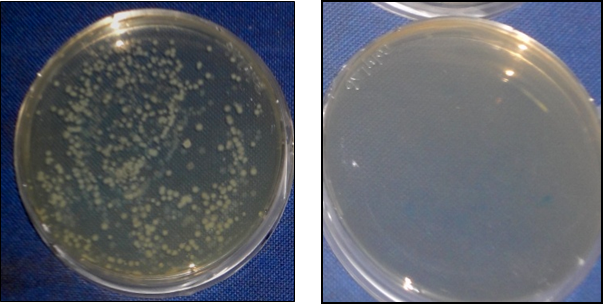
The human body is entirely capable of repairing itself but delays in this process can turn seemingly harmless wounds into fatal hotspots of infection. In ancient wars, a large number of deaths were caused due to full blown systemic infections where germs gained access through wounds. As early as the 2nd century A.D, Egyptians realised that occluded, or closed, wounds heal faster compared to exposed lesions due to the simple fact that they reduced chances of bacterial infiltration. This led to the development of a new genre of treatment strategies. Today, wound dressings serve this purpose and are routinely employed to hasten the process of healing. However, the commonly used cotton gauze dressings are destructive to newly formed tissue and are painful to remove because they are dry.
Deeper insights into tissue repair processes have revealed that moisture aids tissue regeneration and soothes inflammation. This has inspired a new breed of moisture laden dressings called hydrogel dressings. They consist of gel polymers saturated with water that promote tissue regeneration and don’t adhere to the wound. But there’s a catch: the moisture-rich environment of hydrogels can serve as hotspots for bacterial and fungal growth. Although, conventional hydrogel dressings contain antibiotics to counter infection, their clinical use is restricted due to health concerns posited by rising bacterial resistance. Intrigued by the conundrum, Maneesh Jaiswal from Indian Institute of Technology, Delhi, collaborated with the All India Institute of Medical Sciences to design a solution.
Jaiswal is experienced in working with metal nanoparticles, which have recently gained a lot of attention as novel antibiotics. Due to their small size the nanoparticles can infiltrate the bacterial system and overhaul the machinery. Presently a gamut of nano-metalcomposites is being tested as broad spectrum antibiotics. Among these, silver nanoparticles have emerged as the least toxic alternative. To create sterile gel dressings the scientists decided to swap conventional antibiotics with silver nanoparticles. “Our aim was to develop a safe, effective yet economic dressing for all kinds of chronic superficial wounds. We were confident that hydrogel matrices would serve this purpose and could be combined with silver nanoparticles to prevent infection. But the stability of silver nanoparticles was an issue,” Jaiswal explains. Metal nanoparticles are known to leach out from therapeutic composites and cause cellular toxicity. To circumvent this problem Jaiswal and his colleagues took two additional measures. To prevent metal overdosing, the researchers established the minimum concentration of metal required for effective antibacterial activity. Next, they stabilised the nanoparticles by coating them with a biocompatible gel possessing wound healing properties prior to incorporation in the dressing. In doing so they created an antibacterial reservoir that could prevent the entry of microbes and boost the restoration of tissue architecture. The embedded hydrogel dressings were then tested for bacterial growth both in vitro and in rats.

The scientists tested their model against three bacterial species that are most commonly found in infected wound tissue—Pseudomonas aeruginosa, Escherichia coli, and Staphylococcus aureus. Nanoparticle infused matrix discs could inhibit the growth of all three bacterial species in culture plates. When applied to rat wounds, pro-healing parameters were discernible in about 8 days without any hint of associated toxicity. Scientists are confident that in view of rising antibacterial resistance, reservoir-based dressing may provide a respite from local infections. The researchers are presently planning to hand over this model to healthcare company for mass production, which they presume would be available at an affordable cost. “We have filed for an Indian patent and are collaborating with clinical agencies,” says Jaiswal. “Many other scientists are also using combined approaches to design novel composites using metal nanoparticles and hydrogels,” he adds. In the coming years, such therapeutic strategies will play a role in the development of sophisticated smart dressings with diverse biomedical applications.